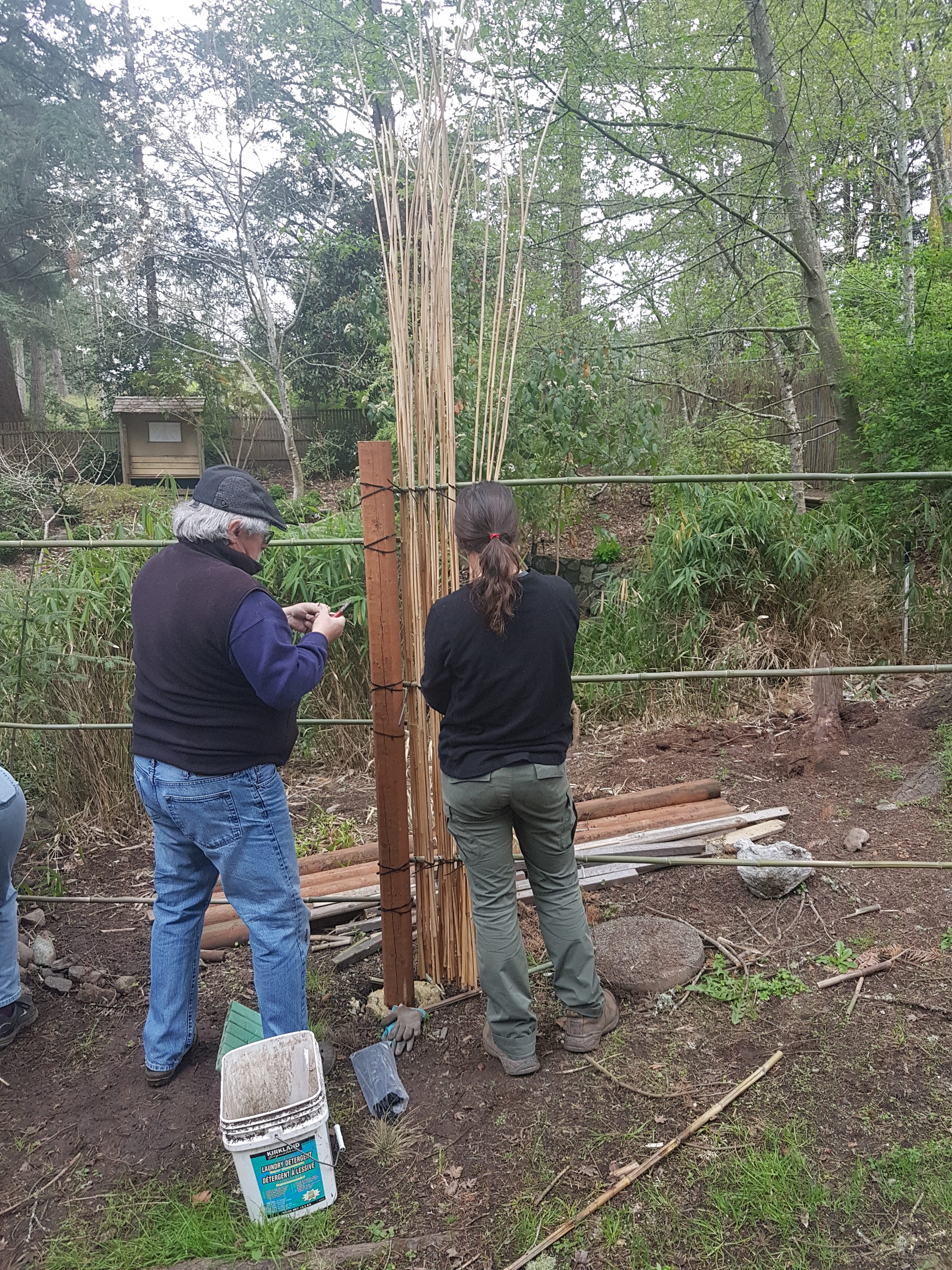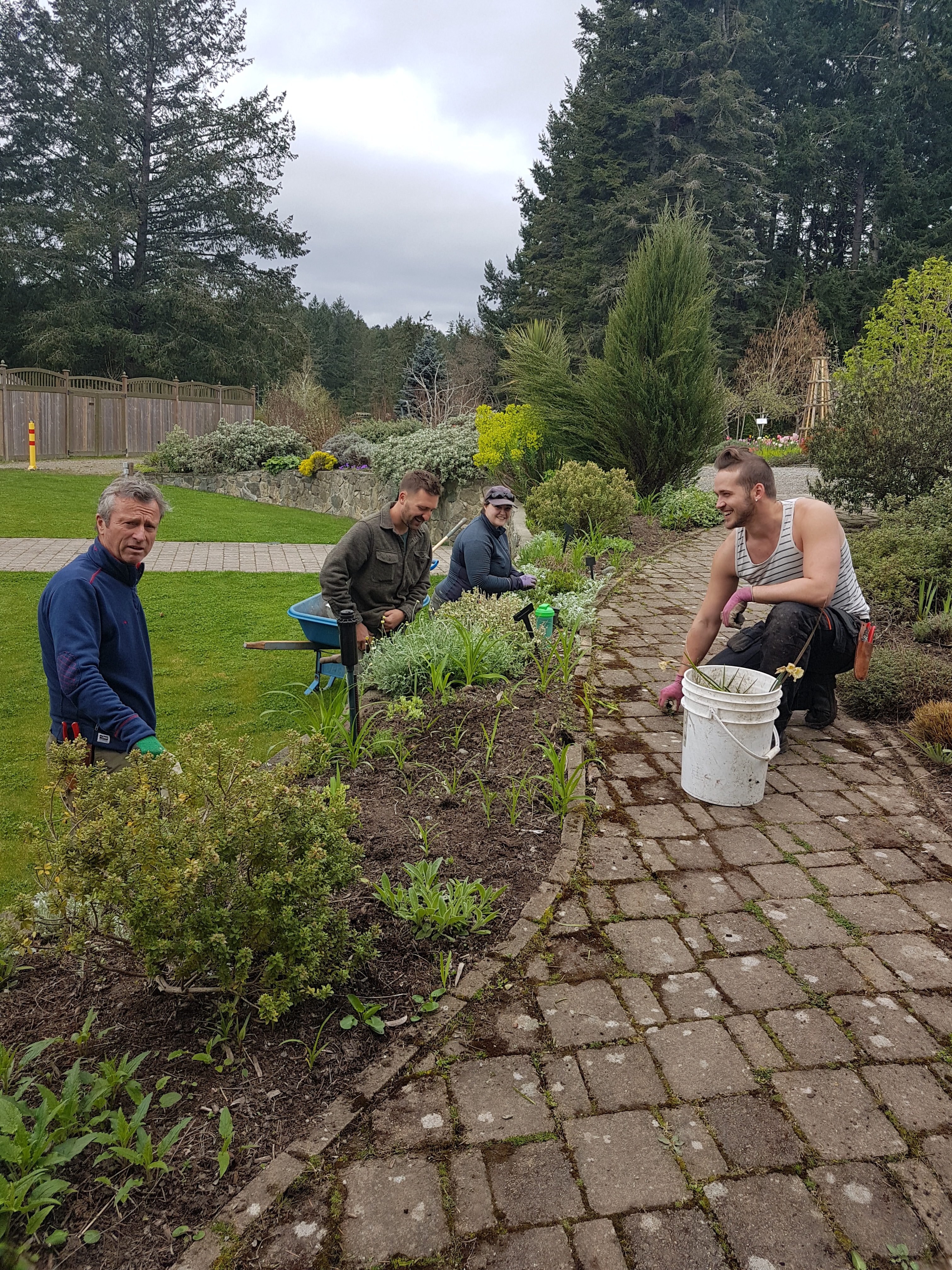The Co-evolution of HCP's Plants and Volunteers
An article recognizing the rise of the Gardens of HCP and the role of volunteers
by: Fareeha Siddique

HCP student, Erin Weckworth (right); and 2016 elected director, founder of the Bonsai Garden and current volunteer, Jim Haskins (left), work together on building a bamboo fence.
As new PHC students and guests, we come and go through The Gardens of the HCP, viewing only what is in front of us. The botanic beauty of the Horticulture Center of the Pacific comes together underneath open skies and canopies of our native conifers; with a plethora of plant species and vibrant colours arousing a charming sense of awe and excitement. However, what tends to slip past our conscious awareness is the intricate stories and details of how exactly the beauty seen before us came to be - for which the volunteers hold the key.
With the weather of Victoria gradually stirring human activity towards spring, guiding us by the increasing length of day and warmth, literal change can be seen taking place at The Gardens. The inherent nature of a garden is to grow. Change is constant and is reflected by the many plant species seen throughout the center. The Heather Garden, for example, was established in 1985, by the North American Heather Society; two years after the volunteers first stepped through the gates in ‘83 to begin the physically-demanding handiwork. Through the years, these non-mobile species have witnessed the evolution of everything occurring within their vicinity; and likewise, so have the volunteers.
At first Crown land, The Gardens of HCP was formed on November 7, 1979. This year will be its 40th anniversary, marking all the time that has gone into creating what we see today. Much of this was done by the generosity of the volunteers, in ways signifying the initial visions set by the founding members - that is, to create a place to come to garden, learn to garden, and have a forum of cultural and knowledge-induced exchange transpire. Continuing to this day, the adherent passion for plantae and open share of knowledge has kept many of the volunteerscoming back, some being here for over 35 years. A sense of belonging is present within the center, and an ethos of receiving, giving and sharing is created.
Such characteristics can be currently seen in the student-volunteer partnership rotations taking place from April to May. This consists of students working with different volunteer groups that are in charge of caring for a specific garden area, such as the Garry Oak Meadows, Bonsai Garden, Polyhouses, Native Gardens and Western Woods, so on so forth. We are learning all kinds of niche information and particular details from expert gardeners; alongside getting an insider's view on how each garden came to be. All the tremendous effort, conscientiousness and passion put in throughout the years have evolved the gardens from fields of invasive blackberries to the glorious colours and animate life that we see today.
In return, by learning the stories of how the particular gardens were developed from the volunteers, a sense of familiarity is being formed. Students are beginning to recognise and appreciate all the transformative processes that has augmented to the garden aesthetics. Plant species, as it happens to be, are an accumulation of this continuous transformation and change, reflecting what is occurring and what has happened. However, the change is double-sided. It is experienced both by the plants, as well as the volunteers who worked on making it happen. This mutual development illustrates the symbiotic relationship between humans and plants that is inherent in the act of gardening; and is clearly visible in the proprietary bondage the volunteer groups have with their respective garden areas that they have grown with.
The history of HCP is a history of growth, and is not only told by the plants that are flourishing here, but also the volunteers. Going hand-in-hand, many of the plants at the HCP and volunteers have aged together. They have grown, endured and developed through the years, evolving and transforming with each other. If you want to know the story of HCP's plants, speak to the volunteers, as they will translate all the unique experiences they both have shared.



